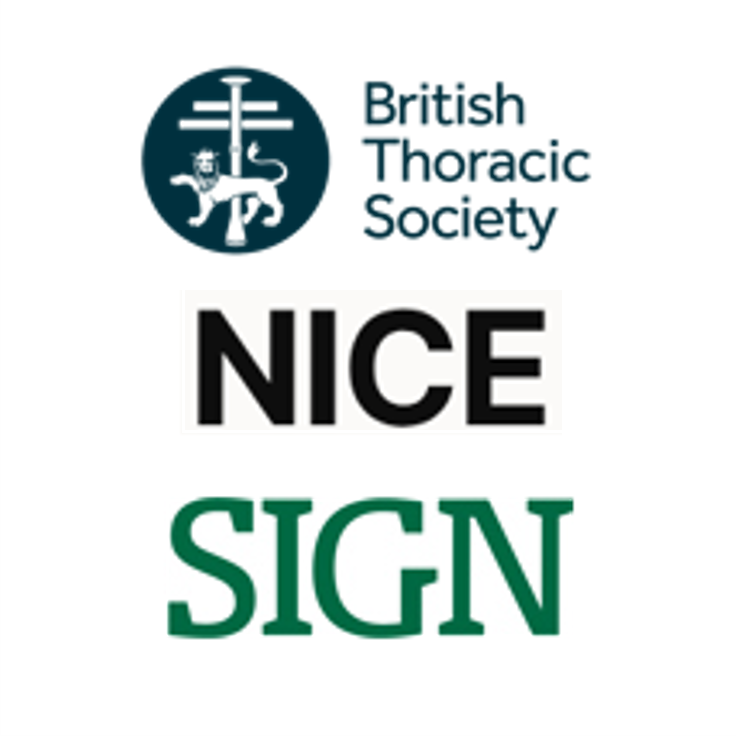- 545. Accuracy of death certificates in bronchial asthma. Accuracy of certification procedures during the confidential inquiry by the British Thoracic Association. A subcommittee of the BTA Research Committee. Thorax 1984;39(7):505-9.
- 546. Bucknall CE, Slack R, Godley CC, Mackay TW, Wright SC. Scottish Confidential Inquiry into Asthma Deaths (SCIAD), 1994-6. Thorax 1999;54(11):978-84.
- 547. Burr ML, Davies BH, Hoare A, Jones A, Williamson IJ, Holgate SK, et al. A confidential inquiry into asthma deaths in Wales. Thorax 1999;54(11):985-9.
- 548. Mohan G, Harrison BD, Badminton RM, Mildenhall S, Wareham NJ. A confidential enquiry into deaths caused by asthma in an English health region: implications for general practice. Br J Gen Pract 1996;46(410):529-32.
- 549. Wareham NJ, Harrison BD, Jenkins PF, Nicholls J, Stableforth DE. A district confidential enquiry into deaths due to asthma. Thorax 1993;48(11):1117-20.
- 550. Royal College of Physicians. Why asthma still kills: the national review of asthma deaths (NRAD); confidential enquiry report 2014. London: Royal College of Physicians; 2014. [cited 15 Jul 2014] Available from http://www.rcplondon.ac.uk/sites/default/files/why-asthma-still-kills-full-report.pdf
- 551. Harrison B, Slack R, Berrill WT, Burr ML, Stableforth DE, Wright SC. Results of a national confidential enquiry into asthma deaths. Asthma J 2000;5(4):180-6.
- 552. Spitzer WO, Suissa S, Ernst P, Horwitz RI, Habbick B, Cockcroft D, et al. The use of beta-agonists and the risk of death and near death from asthma. N Engl J Med 1992;326(8):501-6.
- 553. Suissa S, Blais L, Ernst P. Patterns of increasing beta-agonist use and the risk of fatal or near-fatal asthma. Eur Respir J 1994;7(9):1602-9.
Lessons from asthma deaths and near-fatal asthma

This content is from the BTS/SIGN British guideline on the management of asthma (SIGN 158), 2019.
Confidential enquires into over 200 asthma deaths in the UK conclude there are factors associated with the disease, the medical management and the patient’s behaviour or psychosocial status which contribute to death. Most deaths occurred before admission to hospital.545-549
Disease factors
Most patients who died of asthma had chronically severe asthma. In a minority the fatal attack occurred suddenly in a patient with mild or moderately severe background disease.545-549, 551
Medical management
Many of the deaths occurred in patients who had received inadequate treatment with ICS or steroid tablets and/or inadequate objective monitoring of their asthma. Follow up was inadequate in some and others should have been referred earlier for specialist advice. There was widespread underuse of written management plans. Heavy or increasing use of SABA therapy was associated with asthma death.545-549, 552, 553 The NRAD report recommended that prescription of more than 12 SABA inhalers a year should prompt review of a patient’s management.550
Deaths continue to be reported following inappropriate prescription of beta blockers and non-steroidal anti-inflammatory drugs; all asthma patients should be asked about past reactions to these agents (see specific management issues - beta blockers).
Patients with an acute asthma attack should not be sedated unless this is to allow anaesthetic or intensive care procedures (see treatment of acute asthma in adults - critical care settings).551
The NRAD report highlighted that there is an increased risk of death within one month of discharge from hospital following an acute attack and that follow up in primary care is therefore essential (see the section on hospital discharge and follow up).550
Adverse psychosocial and behavioural factors
Behavioural and adverse psychosocial factors were recorded in the majority of patients who died of asthma. The most important of these are shown in the table below.
[BTS/SIGN 2019]
Patients at risk of developing near-fatal or fatal asthma
A combination of severe asthma recognised by one or more of:
- previous near-fatal asthma, eg previous ventilation or respiratory acidosis
- previous admission for asthma, especially if in the last year
- requiring three or more classes of asthma medication
- heavy use of β2 agonist
- repeated attendances at ED for asthma care, especially if in the last year.
AND adverse behavioural or psychosocial features recognised by one or more of:
- non-adherence with treatment or monitoring
- failure to attend appointments
- fewer GP contacts
- frequent home visits
- self discharge from hospital
- psychosis, depression, other psychiatric illness or deliberate self harm
- current or recent major tranquilliser use
- denial
- alcohol or drug abuse
- obesity
- learning difficulties
- employment problems
- income problems
- social isolation
- childhood abuse
- severe domestic, marital or legal stress.
With near-fatal asthma it is advisable to involve a close relative when discussing future management.
Patients with difficult asthma should also be identified (see difficult asthma).
[BTS/SIGN 2019]
Prediction and prevention of a severe asthma attack
Most attacks of asthma severe enough to require hospital admission develop relatively slowly over a period of six hours or more.
[BTS/SIGN 2019]
![]()
![]()